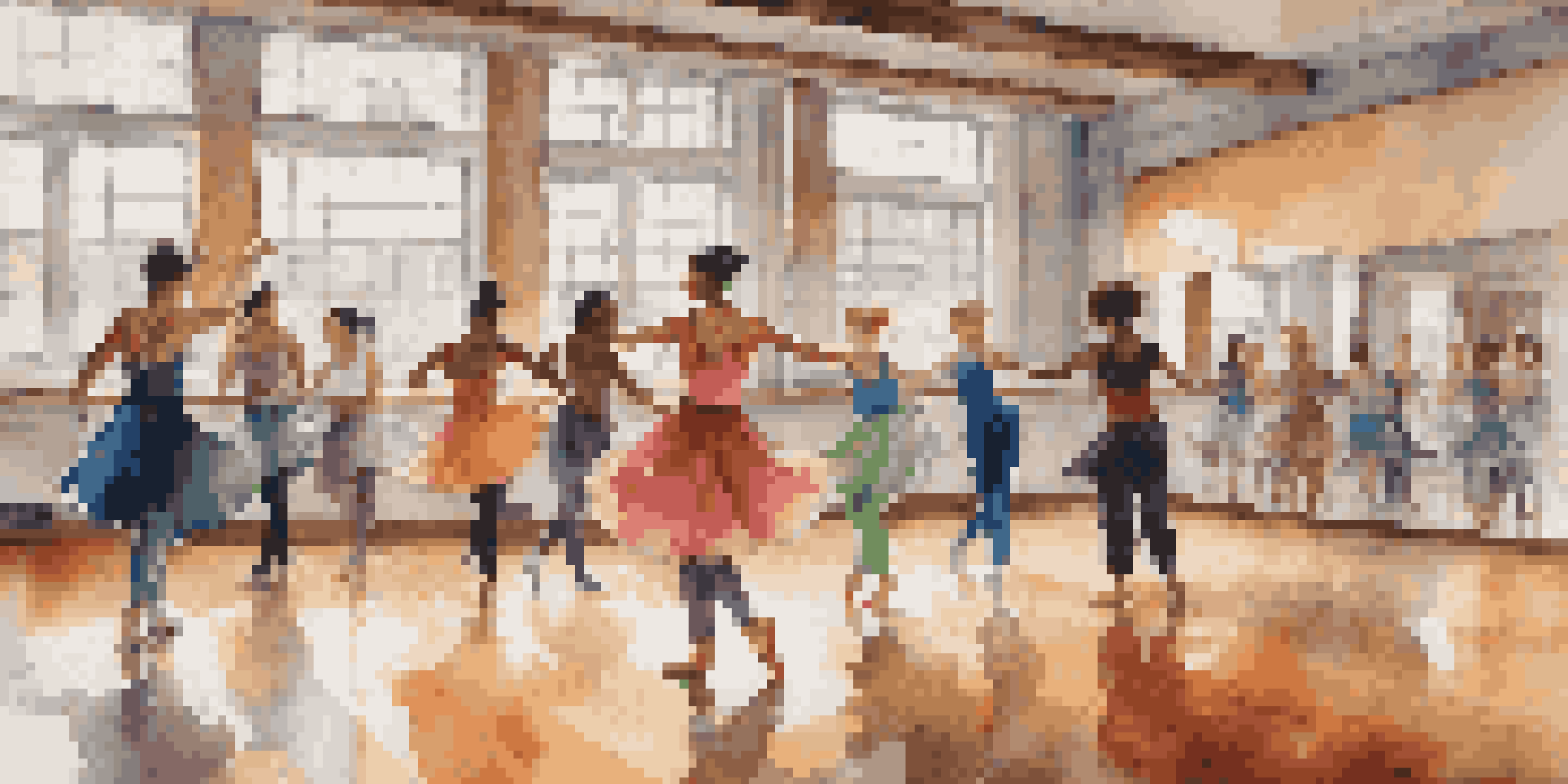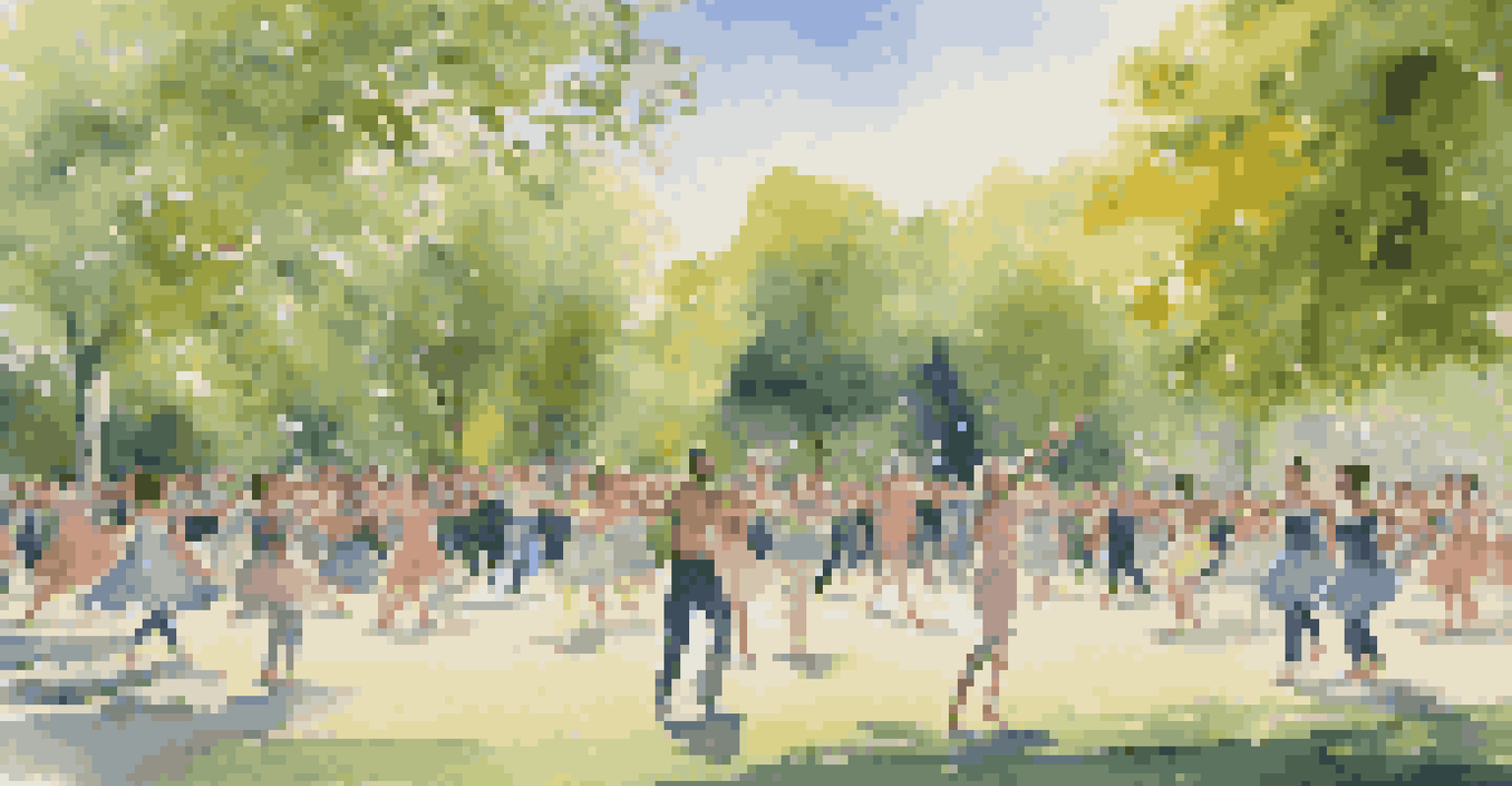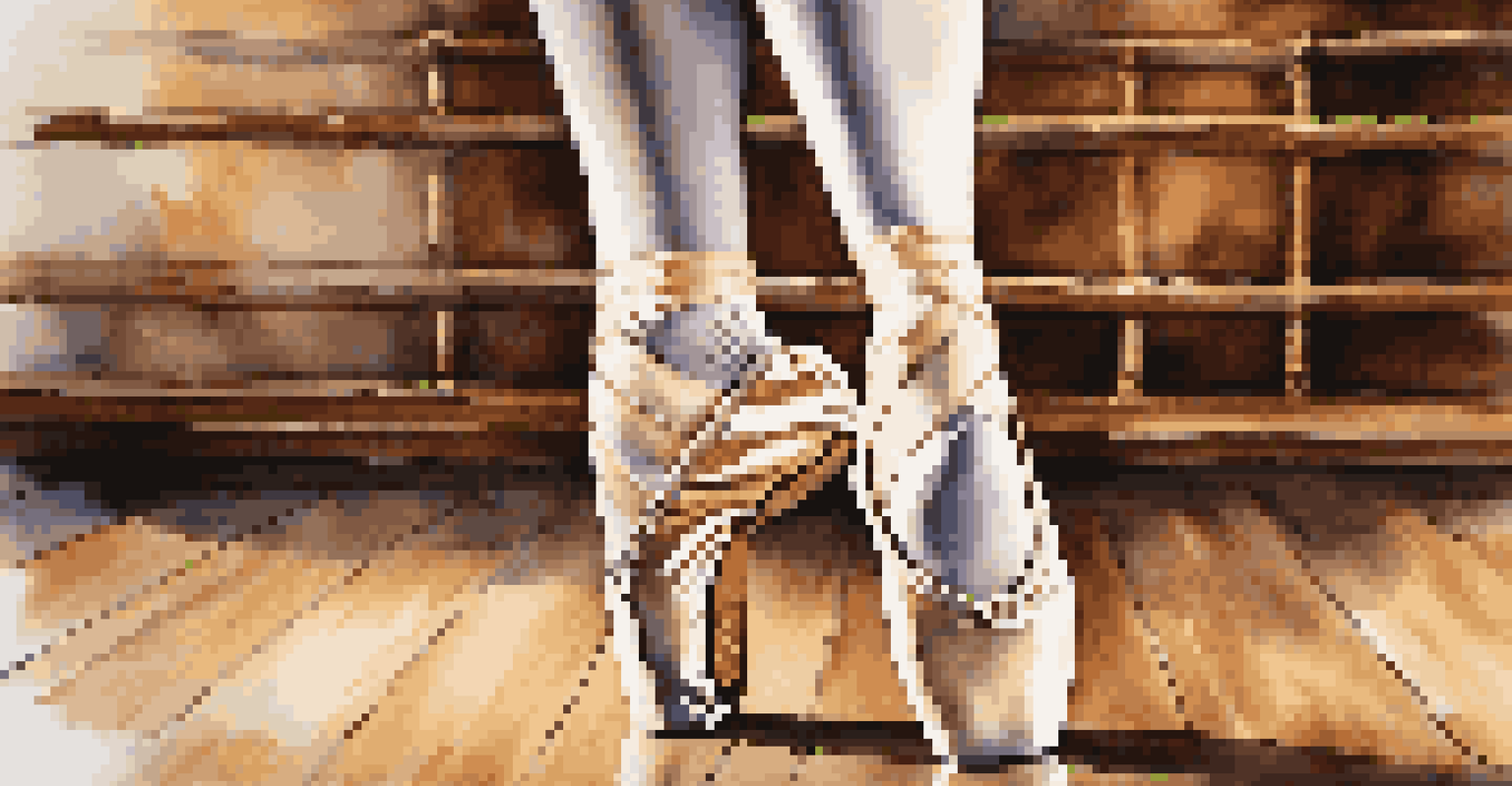Gendered Dance Movements: Their Impact on Social Norms

Understanding Gendered Dance Movements Through History
Dance has long served as a reflection of societal roles, with gendered movements often embodying cultural expectations. Historically, specific styles of dance, like ballet, have been associated with femininity and grace, while others, like breakdancing, are often linked to masculinity and strength. These gender associations can influence perceptions and behaviors, shaping how individuals express themselves in social contexts.
Dance is the hidden language of the soul.
By tracing the evolution of dance forms, we can see how they mirror changing social norms. For instance, the rise of feminist movements has encouraged women to embrace more diverse dance styles, challenging traditional notions of femininity. This evolution not only opens up new avenues for expression but also shifts the cultural narrative around gender roles.
Moreover, understanding the historical context of gendered movements highlights the importance of inclusivity in dance. As more individuals break free from traditional gender roles in their dance practices, we witness a gradual transformation in societal expectations. This journey reflects a broader movement towards equality and acceptance in various facets of life.
The Influence of Dance on Gender Identity and Self-Expression
Dance serves as a powerful medium for individuals to explore and express their gender identity. Through movement, people can convey their feelings and experiences that may not be easily articulated through words. This form of self-expression can foster a sense of belonging and acceptance, especially in communities that embrace diverse identities.

For example, contemporary dance styles often allow for more fluidity in movement, which can resonate with those who identify outside of the traditional binary gender roles. This inclusivity in dance encourages participants to push the boundaries of how they view themselves and their place in society. As a result, dance becomes a space for empowerment and exploration.
Dance Reflects Gender Norms
Dance movements historically embody societal gender expectations, influencing how individuals express themselves.
Additionally, dance can challenge and redefine stereotypes surrounding masculinity and femininity. By embracing a wider range of movements and styles, individuals contribute to a more nuanced understanding of gender, breaking down rigid norms that often limit personal expression. This shift not only impacts the dancers but also influences broader cultural attitudes toward gender identity.
How Social Norms Shape Dance Styles and Practices
Social norms play a crucial role in determining which dance styles are deemed acceptable for different genders. For instance, certain dance genres may be celebrated for their gracefulness when performed by women but criticized for the same qualities when exhibited by men. These contrasting perceptions highlight the restrictive nature of traditional gender roles in the dance community.
The dance is a poem of which each movement is a word.
Moreover, the influence of social media has both challenged and reinforced these norms. Platforms like TikTok and Instagram have enabled dancers to showcase their talents and challenge stereotypes, often leading to the emergence of new trends that defy gender conventions. This democratization of dance allows for a broader representation of styles and movements, encouraging more individuals to participate.
As these new trends gain popularity, they can gradually shift societal perceptions regarding gendered movement. This evolution reflects a growing acceptance of diverse expressions of identity, allowing for a more inclusive understanding of dance. Ultimately, the interaction between social norms and dance creates a dynamic landscape that continually evolves.
Dance as a Tool for Social Change and Advocacy
Dance has long been utilized as a medium for social change, providing a platform for marginalized voices to be heard. Through performances and community events, dancers can address pressing social issues, such as gender equality and body positivity. This activism not only raises awareness but also inspires others to engage with these critical topics.
For example, initiatives like 'Dance for Change' harness the power of movement to advocate for social justice. By bringing together dancers from various backgrounds, these programs create a space for dialogue and collaboration. Such efforts highlight the potential of dance to act as a unifying force in the fight for equality, transcending traditional boundaries.
Empowerment Through Dance
Dance serves as a medium for self-expression, allowing individuals to explore and challenge traditional gender identities.
Furthermore, dance can challenge societal norms by highlighting the lived experiences of individuals. Through storytelling and expressive movement, dancers can shed light on issues faced by different genders, fostering empathy and understanding among audiences. This ability to connect emotionally with viewers can be a powerful catalyst for change.
The Role of Gendered Dance in Education and Youth Development
In educational settings, dance programs often reflect and reinforce societal norms around gender. Traditional dance classes may inadvertently promote gender stereotypes, influencing how children perceive their own abilities and preferences. However, innovative educators are increasingly incorporating diverse styles that encourage all students to explore their creativity, regardless of gender.
By exposing young learners to a variety of dance forms, educators can help dismantle rigid gender expectations. Programs that celebrate individuality and self-expression empower students to embrace their unique identities. This approach fosters an inclusive environment where all dancers can thrive, regardless of their gender.
Moreover, engaging in dance can have profound effects on personal development. It encourages teamwork, boosts confidence, and promotes physical fitness—all essential elements for well-rounded growth. By integrating gender-inclusive dance practices into educational curricula, we can cultivate a new generation that values diversity and self-acceptance.
The Intersection of Dance, Culture, and Gender
Dance is deeply intertwined with cultural heritage, often reflecting the values and beliefs of a society. Different cultures have their own unique dance styles that may carry specific gendered meanings, influencing how individuals relate to their movements. Understanding this intersection is crucial for appreciating the rich diversity of dance across the globe.
For example, traditional dances from various cultures may have distinct roles for men and women, often reflecting historical societal structures. Yet, as cultures evolve and global influences intermingle, we see a blending of styles that challenge these traditional roles. This cultural exchange promotes a more inclusive understanding of dance, allowing for new interpretations and expressions.
Cultural Influence on Dance
Dance is deeply connected to cultural heritage, with its styles reflecting and evolving alongside societal norms.
As dancers navigate these cultural landscapes, they contribute to a broader conversation about gender and identity. By honoring cultural traditions while embracing individual expression, dance can serve as a bridge between past and present. This dynamic interplay enriches the dance community and fosters a deeper appreciation for the complexities of gender and culture.
Future Trends in Gendered Dance Movements and Social Norms
Looking ahead, we can anticipate a continued evolution in gendered dance movements as societal norms continue to shift. With growing awareness of gender fluidity and inclusivity, dance communities are likely to embrace more diverse expressions of movement. This trend may lead to the emergence of new styles that defy traditional categorizations.
Moreover, as technology advances, digital platforms will play an increasingly significant role in shaping dance culture. Online classes and virtual performances can provide access to a wider audience, allowing dancers from different backgrounds to share their unique perspectives. This democratization of dance will likely encourage greater experimentation and collaboration across gender lines.

Ultimately, the future of dance promises to be a vibrant tapestry of voices and movements, reflecting a society that values authenticity and inclusivity. As we continue to challenge and redefine gender norms, dance will remain a powerful vehicle for connection, expression, and social change. By embracing this evolution, we can foster a more inclusive and dynamic dance community.